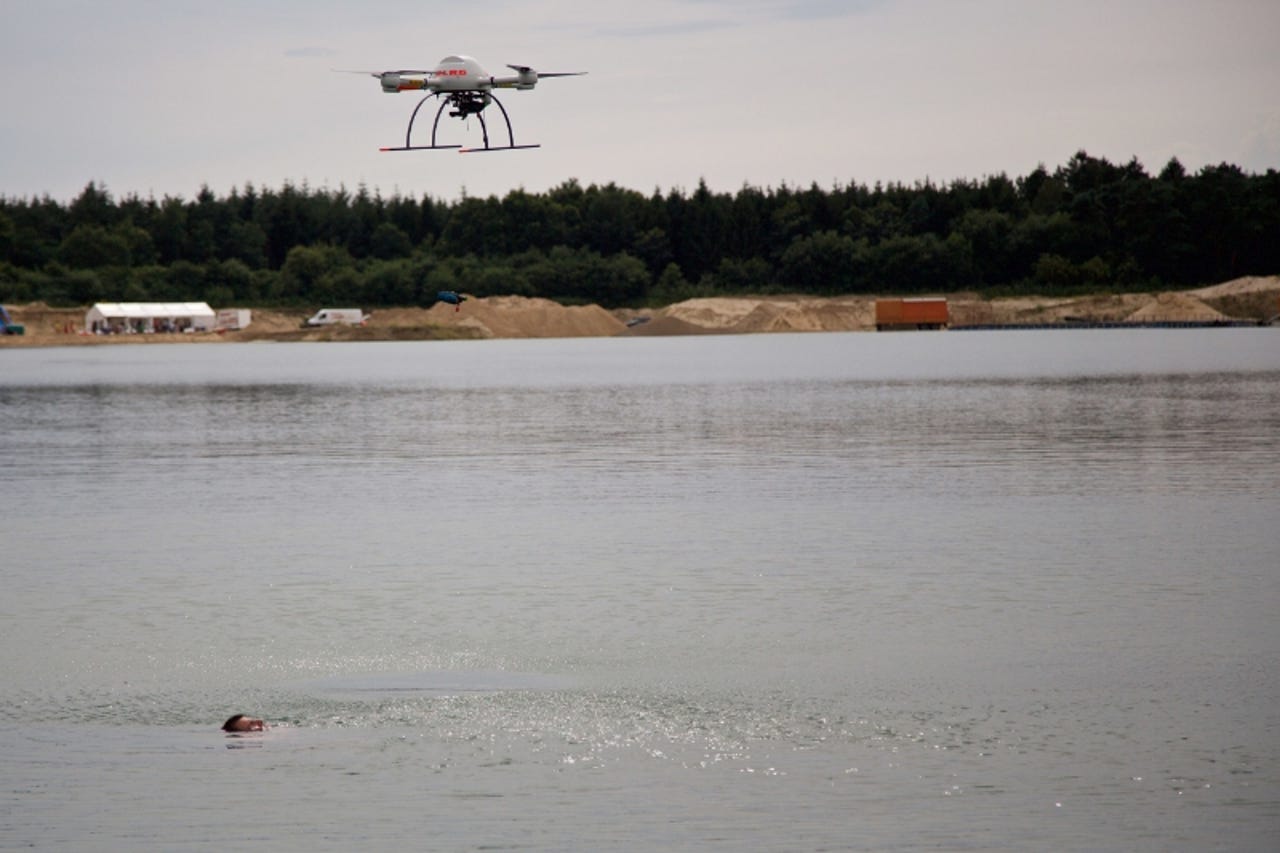How drones could save you from drowning


A microdrones md4-1000 flies quickly over the water, reaches the swimmer far ahead of the swimming lifeguard, and drops a compact flotation device that automatically inflates. (Image: microdrones)
Drones could soon become a standard life-saving tool for lifeguards and rescue teams.
Even just a few seconds in the water can mean the difference between life and death, and robots can fly much faster than people can swim. On his best day, Michael Phelps swims at 6 mph, but drones can reach speeds of 50 mph or more. Plus, smart drones equipped with sensors could help locate survivors lost at sea.
Microdrones just released a new video that shows how unmanned aerial vehicles can drop off flotation devices to help save people from drowning. An association of German lifeguards, DLRG (German Life Saving Association), asked the drone company to develop the drone demonstration, but this technique could be used by rescuers around the world, and by other unmanned aerial vehicles, for that matter.
Last summer, a fire chief in Maine used his personal drone to assist with a river rescue. Two teens were floating down a river with inner tubes when they were knocked off their tubes and became stranded on a rock in the middle of rushing river. While the rescue team worked on the two-hour rescue, the fire chief flew his personal drone -- a Phantom 3 that he usually uses for aerial photography -- to deliver a life jacket to the stranded people.
Auburn, Maine Fire Chief Frank Roma told his local news station WMTW, "I think we've only begun to scratch the surface for what their full capabilities can be in the emergencies field. I was able to see exactly what the drone was seeing. I was able to direct it to where it needed to be."
While a regular consumer drone worked for the Maine river incident, rescue crews would benefit even more if they used machines that were specifically designed for this scenario, and several companies are already working to address this challenge.
DJI recently partnered with 3D-printing startup Shapeways to sponsor a contest for modifying the Phantom to turn it into a rescue drone. According to the contest guidelines:
By adding 3D printed accessories that can improve the drone's visibility, carry payloads and land on water, first responders could cover more area, cutting response times while monitoring hard to navigate waters. More lives would be saved, and fewer first responders put at risk, all thanks to your 3D printed drone modification.
The ideal rescue drone will have to remain stable in harsh marine environments. Microdrone's marketing director Mike Dziok tells ZDNet, "The robust physical characteristics of our drone make it well suited to be stationed for service near at a wet, sandy, salty environment." He added, "The flight characteristics and stability make it well suited to maneuvering in a tricky flight situation, despite the presence of some wind or rain."
The drones that were used in the German demonstration are made from carbon fiber materials with a molding process that seals the frame in order to protect electronic components from any potential damage. "You can operate our drones in sandy conditions or in coastal areas with salty air without worrying about damage to the subsystems," Dziok says.
A French company is also developing a smart drone specifically for the purpose of water rescue missions. The drone, called "Breeze Bird" is meant to be automatic and waterproof, with the ability to land and take off from water.
After witnessing Microdrone's demonstration, DLRG representative Robert Rink said, "I have no doubt that drones will play a significant role in the near future of water rescue -- and that we'll see less fatalities as result."